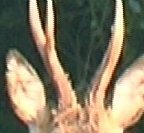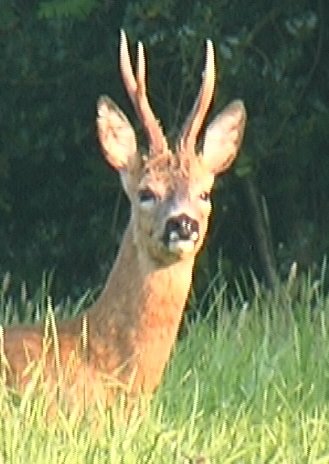Correct!
Mystery Picture Answers
No.21
|
|
The head and antlers of a male (Buck) Roe Deer Capreolus capreolus Standing just 75cm tall at the shoulder the male Roe deer has small antlers, each with three points. The female is a little smaller than the male. The antlers are used to mark the bark of trees as the boundary to a male roe deer's territory, but are also used to fight other males in any dispute over females. Roe deer are mostly found in open wooded areas throughout much of England. Contrary to popular belief, this small deer is not a herd animal and one male will normally associate with one female. They are territorial during late spring and summer. During the breeding season (known as the rut) from mid-July through August the males (bucks) are particularly defensive of their territory, however some females (does) have looser territories that overlap more than one male's territory. Although mating occurs in late summer, the fertilized eggs do not start to develop immediately. This phenomenon, known as delayed implantation is unique amongst hoofed animals. Females typically produce two young during May of the following year. The young will stay with their mother for about 12 months. After this time, their father again becomes territorial and will drive out any young bucks from his territory. The summer fur coat is red and smooth, but in winter this is replaced by longer grey fur. |
|

